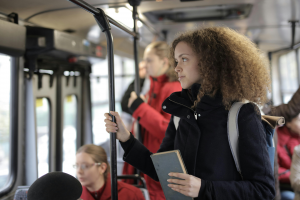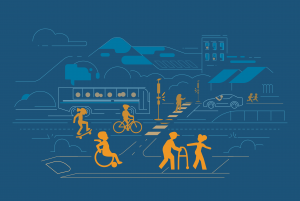
Keeping Cool: The Power of Urban Trees
Urban Equity and Livability in a Warming Environment
As average temperatures in many US cities continue to climb and debilitating heat events become more frequent, the importance of green spaces and shade in urban environments has become increasingly evident. National Heatstroke Prevention Day, observed earlier this month on May 1st, serves as a crucial reminder of the risks posed by excessive heat, particularly in densely populated cities like Los Angeles. To help mitigate these effects, one of the rays of hope we’d like to draw attention to is urban trees and shade.

We know that extreme heat generally reduces outdoor activity, but a range of recent research is demonstrating further issues of equity regarding how urban heat impacts residents. Among several studies, USC spatial scientist John Wilson’s work highlights the unequal distribution of trees across different neighborhoods in LA. Beyond providing shade and cooling effects, trees also offer a natural solution to air pollution, as they absorb carbon. But the problems of equity also extend to transportation as many residents in tree-poor areas of Los Angeles also do not have easily accessible or viable transit options to get to cooler places, like the nearby coast and mountains. Collaborative efforts between researchers like Wilson and other experts in Earth Sciences aim to learn more about the capacity of trees to remove pollutants from the atmosphere, particularly in areas heavily impacted by traffic congestion and industrial activities.
The Southern US is getting even hotter
In Arizona, Maricopa County experienced 425 heat related fatalities in 2022, a 25% increase in heat associated fatalities since 2021. 245 of those deaths were in Phoenix. Almost a year ago, in July of 2023, the daily high temperature in Phoenix exceeded 110 degrees Fahrenheit for 31 straight days, shattering the previous record span of 18 days there set back in 1974.
Regarding urban transportation, incorporating trees into the urban landscape is not only about aesthetics. It’s about creating healthier, more comfortable environments for residents, particularly those who walk, bike and use transit. In areas where public transportation infrastructure is lacking, trees can serve as natural cooling stations, offering shade to those who must wait for extended periods at bus stops or train platforms. By strategically planting trees along sidewalks and at bus stops, cities can enhance walkability and encourage more people to choose active transportation options. This not only improves the overall experience of public transit users but also contributes to the broader goal of reducing greenhouse gas emissions by making sustainable transportation more appealing and accessible.
Turning research into action, the nonprofit Climate Resolve in LA has a new approach, recruiting participants from at-risk communities, compensating them financially and offering specialized tree care courses to construct their own community-driven tree planting projects. Not only does this open up opportunities for employment, it can also create an enhanced sense of pride in their local communities.
In cities most susceptible to increasing levels of heat, investing in green infrastructure not only makes them cooler, but also more equitable and livable for everyone. Let’s acknowledge and appreciate the power of urban trees to combat the effects of heat but also recognize their potential to create more pleasant walking and transit access environments for residents. By investing and incorporating green infrastructure into urban design and planning – prioritizing the well-being of citizens who walk, bike and use transit – we can mitigate the impacts of climate change, provide more equitable transportation options and pave the way for a healthier future for our cities.

Want to work with us? Feeling inspired?
Contact us at info@dcrdesign.net or checkout our social medias: LinkedIn, X and Instagram
For more information visit:
Vision Zero, safe systems approach and NHTSA




